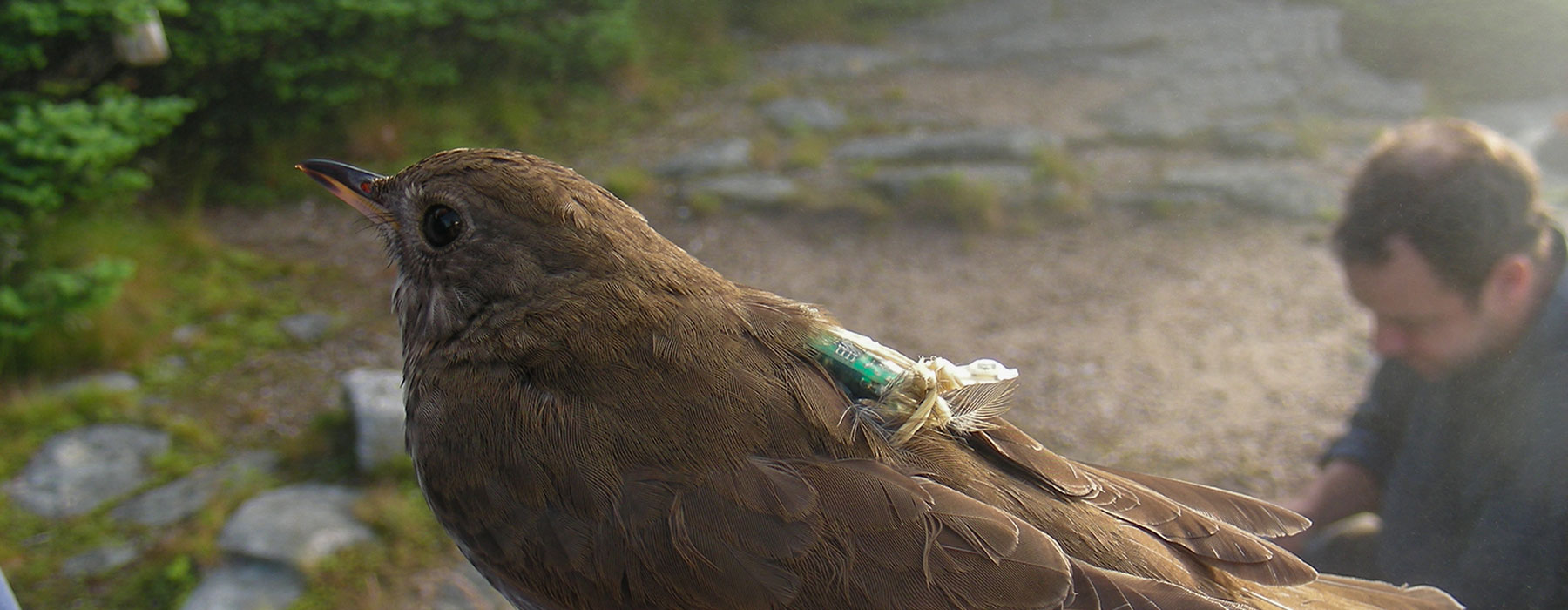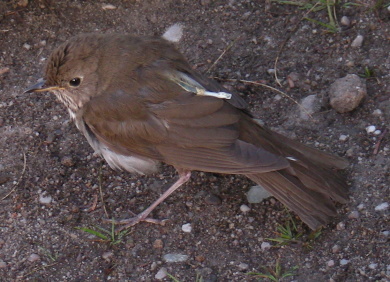Ever since the day in 1803, when John James Audubon tied thin silver cords to a brood of Eastern Phoebes near Philadelphia, and later confirmed that two returned to the neighbourhood the following year, ornithologists have been devising ways to track songbird migration.
Until the last decade, no one had tracked small individual songbird throughout their annual life cycle. These movement data are integral for any meaningful conservation action plan. These small birds (e.g., warblers and sparrows) simply can't carry the relatively heavy GPS and Argos tags that shed insight into the incredible movements of raptors, seabirds, and shorebirds. But recently, engineers have developed small tags weighing <1 gram that are light enough for even 12-gram birds to safely wear.
INNOVATIVE STUDIES
VCE biologists were among the many researchers eager for an inside look into the elusive lives of songbirds as they travel the globe. For more than a century, ornithologists have debated the route (inland vs. transoceanic) that Blackpoll Warblers take on their fall migration to northern South America. In October, Blackpoll Warblers amass on the north Atlantic Coast, where they double their weight gorging on insects and berries. And then a cold front arrives from the north…and they depart at sunset into the darkness.
Bill DeLuca (Northeast Climate Science Center) and VCE definitely solved this great modern-day avian mystery. Using light-level geolocators attached to Blackpoll Warblers in Vermont and Nova Scotia, DeLuca and colleagues documented the longest distance non-stop overwater flights ever recorded for a migratory songbird. During October, Blackpoll Warblers initiate a ~3-day non-stop transoceanic flight of ~2500 km from the north Atlantic Coast to Hispaniola and Puerto Rico. Radar data show migrating songbirds fly between 2,600 and 20,000 feet while making this journey. After a few weeks, they fly onto Columbia or Venezuela where they overwinter. Their spring migration route takes them over Cuba to Florida, where they journey up the eastern US seaboard to reach their breeding grounds in late May.
We’re tracking Bicknell’s Thrush to their wintering grounds using light-level geolocators and working with our Canadian colleague Junior Tremblay (Research scientist – Boreal birds & Ecosystems) to track their migratory movements using nanotags and the Motus network. Stay tuned for more results soon.


